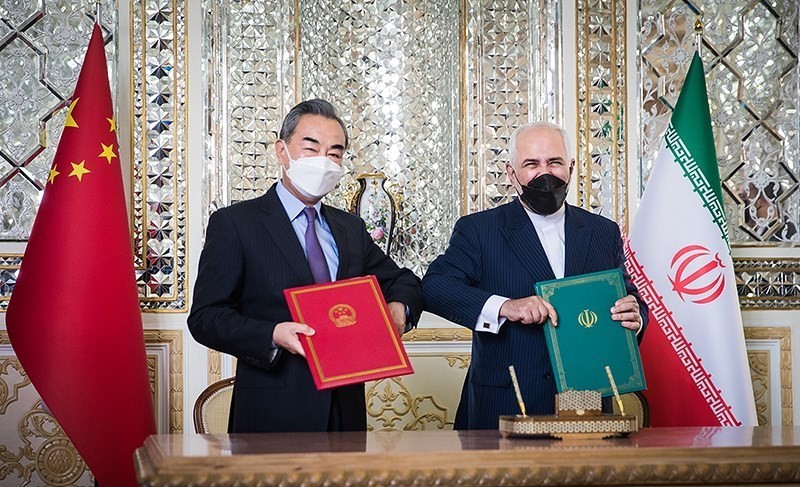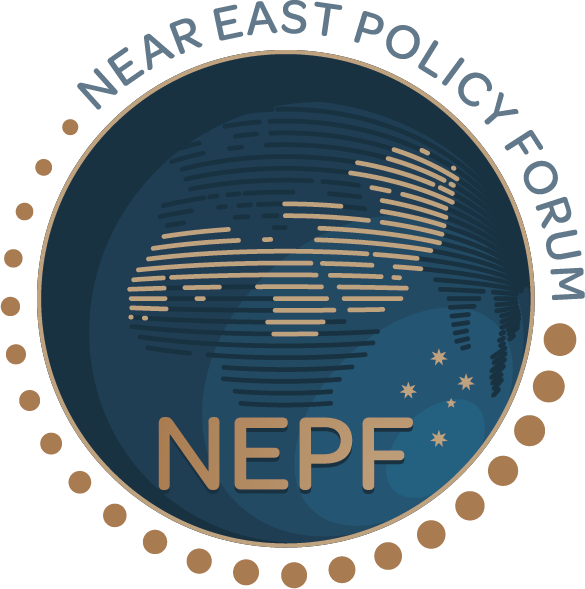China’s relationship to the Gulf could be changing. Previously, it avoided conflict and risk, which helped it establish good diplomatic relations and expand its commercial ties in the region. That approach may become harder given the high importance of Saudi Arabia and Iran to Chinese investments and the two countries’ own rivalry and competitive struggles around the Middle East. In addition, China has to deal with the United States pressuring its allies and partners not to work with Beijing.
Perhaps recognizing the changing climate, China’s foreign minister, Wang Yi, launched a Five-Point Plan to manage conflict in the Middle East at the end of March, stressing the need for mutual respect, equity and justice, non-proliferation, collective security and development cooperation.
The plan is the latest example of China’s attribution of importance to the Gulf region. In 2016 China upgraded relations with both Saudi Arabia and Iran to the level of a Comprehensive Strategic Partnership (CSP) in 2016 – the highest form of diplomatic relationship it can bestow – followed by one with the UAE two years later. At the same time, the partnerships highlight China’s approach to the region: both by balancing between the Arab Gulf states and Iran and the emphasis on official, bilateral relations at the state level.
Both the plan and the upgrade in diplomatic relations coincide with a fraught period in the Middle East. Since the Arab uprisings in 2011, the region has become more fractured and fragmented, at a time when the influence of the US as the hegemonic power is perceived to have diminished. That situation has provided fertile ground for Saudi Arabia and Iran to play out their differences regionally in Syria, Libya, Lebanon, Palestine, Yemen and Qatar.
Although most of these states are not major trading partners for China, the instability they generate and which is exploited by Iran and Saudi Arabia could undermine Chinese commercial interests – especially its Belt and Road Initiative which was launched in 2013 both to build greater connectivity across Eurasia and provide an outlet for Chinese capital.
Greater Iranian and Saudi rivalry could discourage Chinese firms from making future investments in both countries and the wider Middle East. In addition, post-2011 instability in places like Syria has provided space for extremist groups like the Islamic State to grow and target China for its treatment of the Muslim Uyghur minority in the western province of Xinjiang.
In addition, the US has added to China’s regional difficulties. It has pressured Israel and the UAE not to collaborate too closely with China, lest it should undermine the arrangements it has with them. The US may be pushing at an open door, given China’s backing for the 2015 Joint Comprehensive Plan of Action nuclear deal with Iran – an agreement which Arab Gulf states like Saudi Arabia and the UAE oppose, along with Israel. All three may also have doubts regarding China’s assertions of regional neutrality, given Chinese security cooperation and its recent agreement to enhance its partnership with Iran. Although the content of the agreement has been overstated and challenged, the deal fits into the wider narrative of an emerging Sino-American Cold War, with Iran as a key Chinese regional ally.
Beijing has tried to downplay any suggestion it is solely in Iran’s corner. In 2019 it hosted a Middle East Security Forum to encourage dialogue. It has also promoted the Belt and Road Initiative as a tool to support “peace through development,” whereby Chinese investment will lead to economic growth and development, thereby reducing grievances.
All these threads at conflict management are contained in the Five-Point Plan. However, the plan remains one of principles rather than one of action. Consequently, it is unclear if the Plan is anything more than a rhetorical device and if it can be implemented in practice. Indeed, there are only a few specific recommendations for the Gulf, from the creation of a trust mechanism and protection of oil facilities and shipping lines as important first steps.
There is also a big question of whether China is prepared to take on a more active role as a conflict mediator. First, this could bring it into conflict with Washington, given the prominence of the US as a security provider in the region. Second, the Middle East is not a primary site of concern for China. Its priorities are closer to home, in its immediate periphery and the South China Sea – where successive American administrations have sought to “pivot” and apply greater diplomatic and military pressure. For both these reasons, it may be China’s advantage to play down its Middle East activities in order to reduce the space for conflict with Washington.
Third, there are regional risks to becoming a more active mediator. One is that although China is currently held in high regard by its regional partners, there is little indication that the Saudis, Iranians and others expect the Chinese to change from its current course of “strategic” ambiguity” or “hedging” (i.e. where it cooperates with regional states while avoiding their rivalries and conflicts). Another is that if China does become more active, success cannot be guaranteed. If it is unable to successfully mediate between regional rivals, that could undermine its credibility and diminish its status as a world power.
In sum then, notwithstanding the Five-Point Plan’s recent publication, it seems that China’s leaders face some tough choices in relation to its regional strategy in the Gulf. China has managed to avoid the region’s rivalries and conflicts so far, but may find it harder to do so in the future. But the changes that may be required to make them a reality may be too much for them to handle. For these reasons, Beijing appears at a crossroads in the Gulf.
The views expressed in the Near East Policy Forum are those of the authors and do not represent the views of the Near East Policy Forum or any of its partner organisations.




